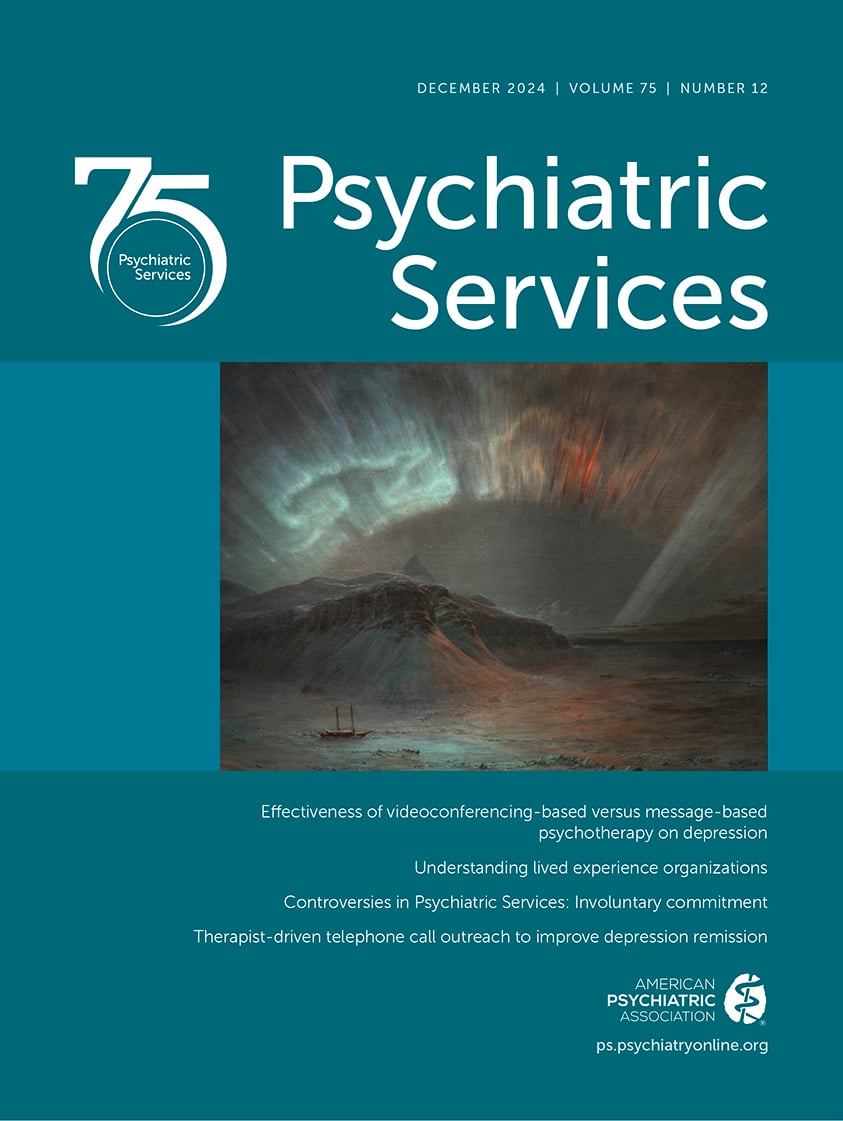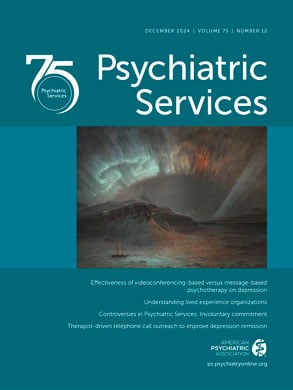The implementation of involuntary commitment poses an ethical dilemma for the people who impose it, in that they must balance the fundamental principles of patient autonomy and beneficence. We believe that involuntary commitment, even with its infringement on autonomy, is necessary to have as an option because it provides a way for vulnerable people who are unable to seek medical care for themselves to receive it.
In recent years, there have been calls to abolish involuntary treatment as well as efforts to expand it. On November 29, 2022, Eric Adams, the mayor of New York City, released interpretive guidance on the involuntary commitment laws of New York State with the intent of increasing involuntary hospitalizations of unhoused people with serious mental illness (e.g., bipolar disorder, major depressive disorder, schizoaffective disorder, or schizophrenia) (
1). Whether this guidance is appropriate or whether involuntary commitment should be used solely when an individual is at imminent risk of harming themselves or others or experiencing harm is a matter of fierce debate.
Whether involuntary commitment is imposed for the individual’s or society’s sake, the laws pertaining to it provoke a tension between an individual’s right to autonomy and an individual’s urgent need for mental health treatment. Rationales supporting involuntary commitment typically focus on the police power of the state (i.e., the power of the government to exert control over persons and property in the interest of public safety) and its parens patriae responsibilities (i.e., its mandate to provide care for its citizens).
In the 1970s, U.S. courts began rejecting the need for treatment as a rationale for involuntary commitment, most famously in the Wisconsin federal court decision of
Lessard v. Schmidt in 1972. Some states included as an additional basis for involuntary commitment “grave disability” or “inability to care for self” (
2). This criterion was not broadly paternalistic in scope; it was limited to individuals who were dangerous to themselves because they lacked the ability to procure their own food, clothing, or shelter (
2).
Parens patriae is often minimized in contemporary debates as well as in clinical decision making. Patient autonomy and shared decision making have become increasingly important in the medical field, but this development does not mean that substituted judgment that benefits a patient should be prohibited. Health care providers do not withhold antiepileptic medications from a patient who is experiencing a seizure because that patient cannot provide consent. When a patient experiencing alcohol withdrawal delirium refuses medical evaluation and treatment, health care providers do not discharge the patient without treatment. Why, then, would clinicians treat the vulnerable population of people with serious mental illness with less beneficence?
Objective assessment of the utility of involuntary commitment is difficult because substantive medical evidence regarding its effectiveness and associated outcomes is lacking. Further, involuntary hospitalization is a difficult intervention to study, in part because establishing a suitable control arm presents substantial design challenges. Patients who are released from emergency settings and patients who agree to hospitalization have baseline characteristics that are substantively different from those of involuntarily hospitalized patients. Resolving such differences through randomization poses obvious ethical barriers. However, as psychiatrists working on inpatient units, we treat many patients each year who are involuntarily committed. Every day, we see the benefits of involuntary commitment: the patient with catatonia who begins to walk and talk, the patient lifted from the depths of despair, the patient finding relief from torturous auditory hallucinations. The ideal purpose of involuntary commitment is often lost in heated debates.
In November 2023,
The New York Times published an article reviewing 94 acts of violence by unhoused individuals with serious mental illness that occurred around New York City (
3). The authors concluded that these incidents were preceded by a failure of the city’s social safety net. Emergency department and inpatient providers and staff are often pushed to make challenging decisions to meet the demand for care imposed by the growing number of patients who need inpatient psychiatric services. This increased demand suggests that safety nets for patients with mental illness—as well as those for patients contending with substance addiction or dependence, general medical problems, and psychosocial needs—need to be strengthened. Moreover, such concerns highlight the danger of discharging patients prematurely (or not admitting them at all).
People who have the power to impose involuntary commitment on a patient must genuinely consider the necessity and specificity of its implementation. They should take great care to ensure strict fidelity to the requirements of involuntary commitment. Specifically, involuntary treatment should be clinically essential, the least restrictive option should be used, and treatment should be imposed only when patients lack the capacity to make their own decisions. Decades ago, patients with serious mental illness were confined to long-term institutionalized settings. Over the past several decades, these institutions have been shuttered amid promises of increasing community-based services. However, this increase has not fully materialized. Until these services materialize, state and city officials can continue attempts to wield involuntary commitment as a blunt tool by bringing individuals with severe psychiatric symptoms to emergency departments in the hope that they will be hospitalized. This weaponization propagates the revolving door of inpatient hospitalization: a patient is stabilized and then discharged with inadequate resources, only to be readmitted shortly after discharge. As a result, involuntary hospitalization can appear punitive rather than beneficent in the current U.S. mental health system.
Thus, our strong support for involuntary commitment comes with qualifications. For example, we also advocate for the expanded availability of less restrictive interventions, including maximizing intensive outpatient programs and treatments. Outpatient treatment is certainly less restrictive than inpatient treatment. Many outpatient programs cannot meet demand and are underfunded, and many individuals, especially members of historically disadvantaged demographic groups, struggle to access outpatient services. The ideal would be to make readily available a range of services with varying levels of restriction, where patients could be released to less restrictive levels of care as soon as they improve. This tiered system would preserve patients’ autonomy and provide them with access to treatment that could alleviate their mental illness. Increasing equity by expanding social services, including assistance with food and housing, would also likely reduce the number of inpatient hospitalizations and the need for involuntary commitment. Furthermore, a key component of successful treatment is truly listening to what patients report about their needs and barriers to receiving care. Patient feedback should be incorporated into treatment services to make an inpatient stay as comfortable as possible and to avoid adding more stress to an already tumultuous time in a patient’s life. Last, efforts should be made to alleviate health care provider shortages and ensure mental health parity.
In addition, other concerns related to involuntary commitment require attention. Considerable and concerning evidence shows that involuntary commitment can be overused with individuals who are Black, brown, poor, multiracial, or members of other demographic groups that often experience discrimination (
4). Several factors contribute to this form of inequity, among them racism, cognitive biases, and disparities in social determinants of health (
4). We see these inequities firsthand in our work every day, and safeguards should be instituted to reduce them. Ethical debates are inherently challenging, and we do not pretend to have all the answers, but the debate over involuntary commitment is not complete unless everyone keeps the humanitarian perspective in mind.
Viewing involuntary commitment as merely punishment and protection is shortsighted. Rather, involuntary commitment can be an invaluable and irreplaceable tool to prevent pain and distress and help vulnerable patients achieve stability. The use of involuntary commitment raises legal concerns, but this intervention enables clinicians to provide potentially lifesaving care in situations where withholding care would endanger individuals by depriving them of necessary treatment. This humanitarian perspective is often overlooked in discussions about involuntary commitment.

